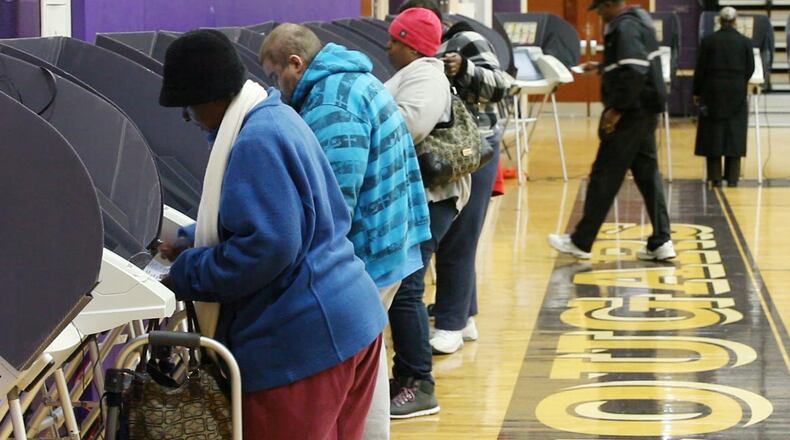Late arriving absentee ballots and provisional ballots that were cast when there were questions about a voter’s eligibility, must still be counted before Ohio’s county boards can certify final, official results by Nov. 28.
RELATED:What happened Tuesday?: Quick look at election highlights
Absentee ballots can arrive at the board by Nov. 17 and will be counted if they are postmarked by Nov. 6 for those originating in the U.S. or Nov. 7 for overseas voters, Harsman said.
So where races are close, losers can hope they may still have a chance to prevail.
Harsman said close races where results could possibly change include the Dayton school board, Phillipsburg income tax, Perry Township police levy and Brookville council.
RELATED: State Issue 2 fails big; confusion blamed
But while hope may spring eternal, Harsman said history shows that the outcome on Election Night typically holds even after absentee and provisional ballots are counted.
Take the race for Clayton mayor, where long-time Mayor Joyce Deitering lost by 31 votes to Mike Stevens.
RELATED: Ohio election audits find near-perfect count
An automatic recount is triggered when the margin of difference in the vote falls within one-half of one percent. So in a two-person race like the Clayton mayor’s race the total number of votes cast — 3,363 as of Tuesday night — is multipled by .005, which equals 16.8 votes, which would be the trigger for an automatic recount.
As of Wednesday the board had 29 provisional ballots from Clayton to verify and count, and an unknown number of Clayton ballots in the two trays of absentee ballots delivered on Wednesday by the U.S. Post Office.
Dietering, who could not be reached for comment, would have to get 19 more votes to put the race into automatic recount, Harsman said.
“I really don’t see enough ballots here to put that into an automatic recount,” Harsman said. “Typically provisonals follow the same vote pattern.”
Ohio law also allows for a candidate to request a recount as long as the candidate pays for it, Harsman said.
Recounts in races with multi-person races are a little more complex. For example, in the Dayton School board race there were eight candidates for four seats. The only incumbent, Joe Lacey, placed fifth and so will lose his seat if the numbers hold.
RELATED: Where do Dayton School Board candidates stand on the issues?
To determine if an automatic recount is necessary the vote total for Karen Wick-Gagnet, whose 7,674 votes put her just ahead of Lacey, is added to the vote total of the four apparent losers - Lacey, Ann Marie Gallin, Paul Bradley and Jo’el Jones.
That total — 32,962 — is multiplied by .005, which equals 165, the margin that would be required for an automatic recount. That means the 201 vote difference between Wick-Gagnet and Lacey on election night is too wide to trigger an automatic recount, Harsman said. That could change with the tallying of absentee and provisional ballots, but Harsman said, “it’s highly unlikely based on our experience.”
Election officials love encouraging people to vote by saying every vote matters. The results for Phillipsburg’s proposed 0.5 percent income tax increase make that point well. The tax issue lost by two votes - 62 to 60, according to election night final, unofficial results.
Harsman said with so few people voting on the village’s proposed tax increase, the trigger for an automatic recount would be less than one vote.
It remains to be seen if somewhere in those trays of uncounted ballots there are three votes that will make village officials very happy.
Other Election 2017 stories:
Kettering mayor wins a final term, seeks ‘bigger and better’ for city
Sinclair’s $28M renewal levy passes easily
Analysis: ‘Soul searching’ in Huber Heights after major victories
About the Author

